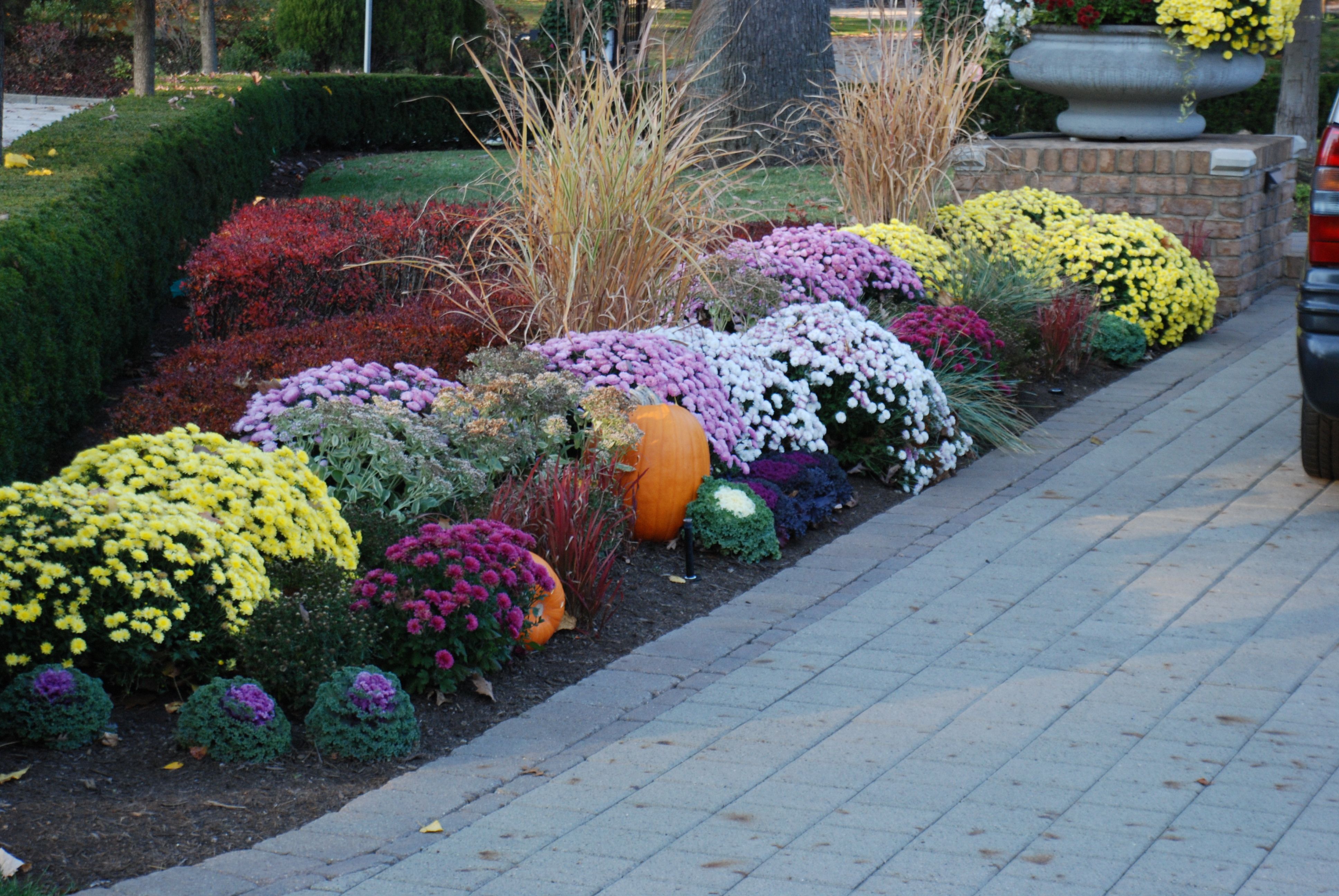Preparing your flower beds for fall is a great way to ensure your garden remains beautiful and healthy throughout the year. Steps you can take to get your flower beds ready for fall:
A. Remove summer annuals: As summer ends, remove any summer annuals that have finished blooming. This will make room for your fall plantings. Identify which plants are summer annuals and which ones are not. Summer annuals are plants that complete their life cycle within a single growing season, usually blooming in the summer and dying off in the fall. Examples of summer annuals include marigolds, petunias, and zinnias.
- Use gardening gloves to protect your hands, and start by pulling out any apparent weeds or dead plant material in the flower bed. This will make it easier to identify and access the summer annuals.
- Use pruning shears or garden scissors to cut back the stems of the summer annuals to about 2-3 inches above the soil line.
- Gently grasp the base of each summer annual plant near the soil line and firmly pull it straight out. Be sure to get as much of the root system as possible, as any remaining roots could regrow and cause problems in the future.
- Once you have removed all summer annuals from the bed, use a garden rake to smooth out the soil and remove any remaining debris. This will help prepare the bed for new planting.
- If you plan to replant the bed, consider adding compost or other organic material to the soil to improve its fertility and health.
- Dispose of the removed plants and any other debris appropriately, such as in a compost or green waste bin.
B. Cut back perennials: Cut back the spent foliage of your perennials to encourage new growth and prevent diseases from overwintering.
C. Clear out debris: Remove any weeds, fallen leaves, or other debris from your flower beds, and this will help prevent disease and pests from taking hold.
D. Adding compost to your soil will improve its fertility and structure. Spread a layer of compost over your flower beds and work it into the top few inches of soil.
E. Plant fall flowers: Choose fall-blooming flowers like mums, asters, and sedum to add color and interest to your garden. Plant them in the spaces where you removed your summer annuals.
Planting fall flowers is a great way to extend the blooming season of your garden and add some color to your outdoor space. Tips you can follow to plant fall flowers:
- Choose the right plants: Select plants that will bloom in the fall for your growing zone. Some popular options for fall planting include asters, mums, pansies, and ornamental kale.
- Prepare the soil: The ground should be loose and well-draining, and add organic matter such as compost or mature manure to help improve soil fertility.
- Select a location: Choose a spot in your garden that receives sunlight daily and is protected from strong winds.
- Plant the flowers: Dig holes in the soil that are the same depth and width as the root balls of your plants. Place the plants in the gaps and backfill them with soil, careful not to damage the roots.
- Water the plants: Give the newly planted flowers an excellent soaking to help settle the soil and encourage root growth. Water them regularly as needed to keep the soil moist but not soggy.
- Mulch the soil: Spread a layer of organic mulch, suppress weeds, and regulate soil temperature.
- Maintain the plants: As the plants grow, pinch any leggy or dead stems to encourage fuller growth and more blooms. Deadhead spent flowers regularly to encourage new buds.
Following these steps, you can plant fall flowers and enjoy their colorful blooms well into the cooler months. Remember to also take care of the plants by providing appropriate watering and maintenance and protect them from frost or extreme cold as necessary.
F. Mulch: Applying a layer of mulch over your flower beds will help insulate your plants and protect their roots from the cold weather to come. Mulch also helps retain moisture, reducing the need for watering.
By completing these steps, you can prepare your flower beds for fall and ensure your garden thrives throughout the seasons.
